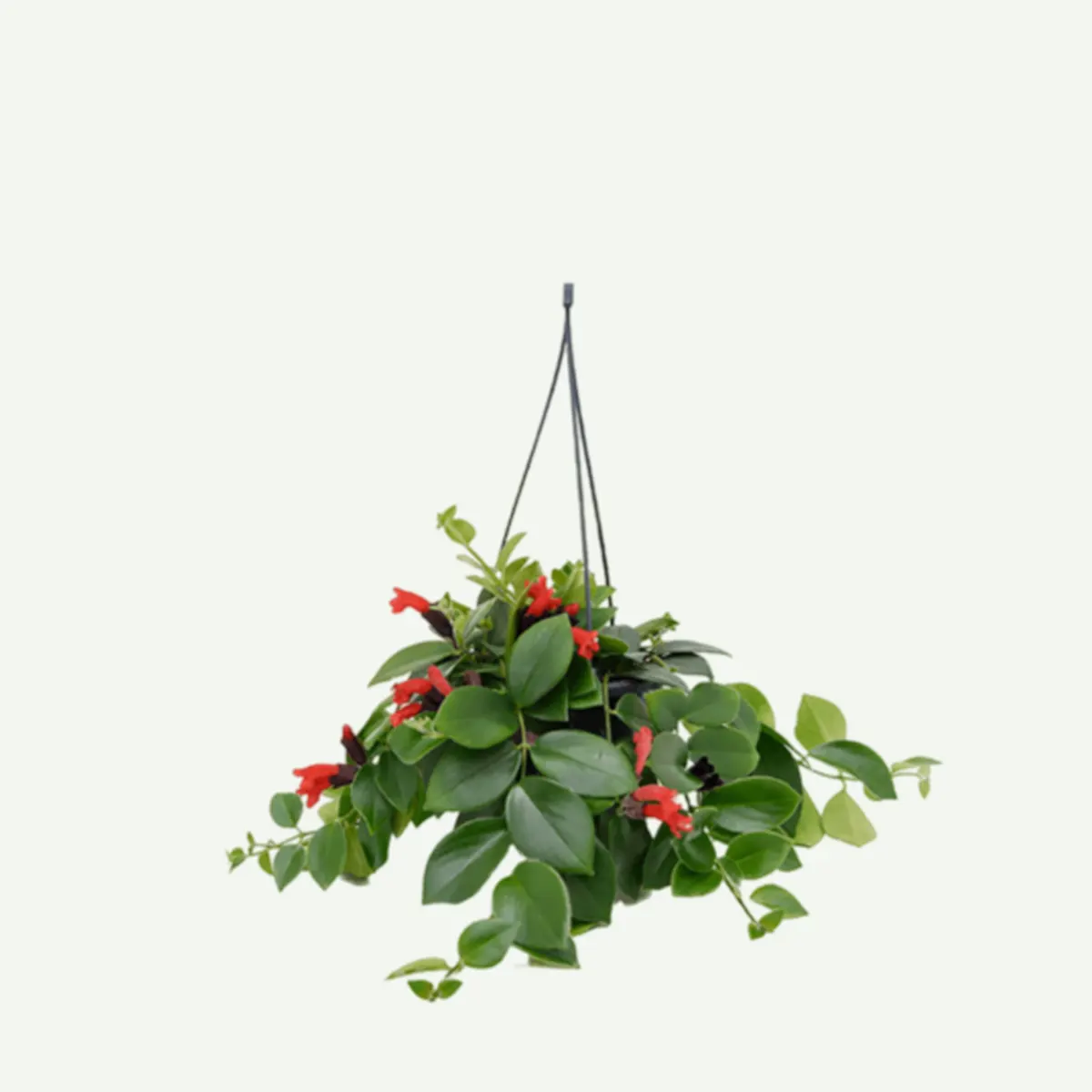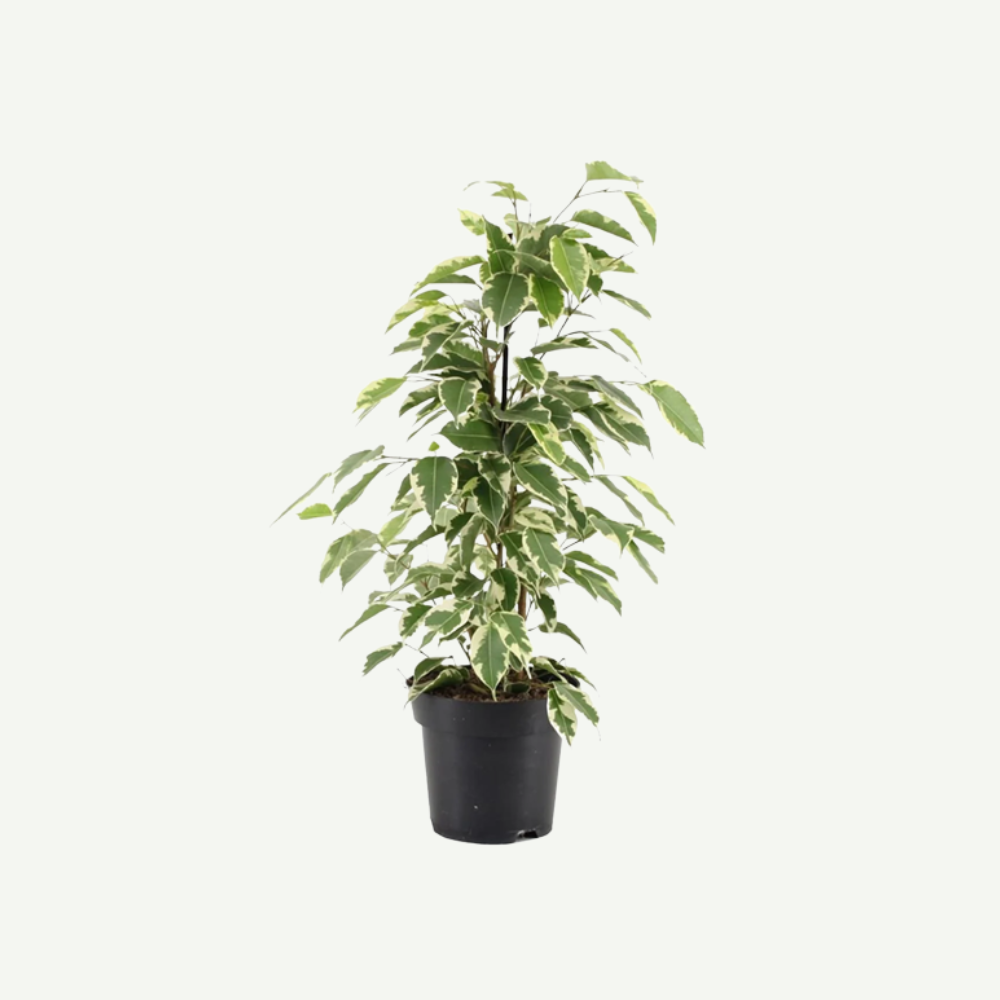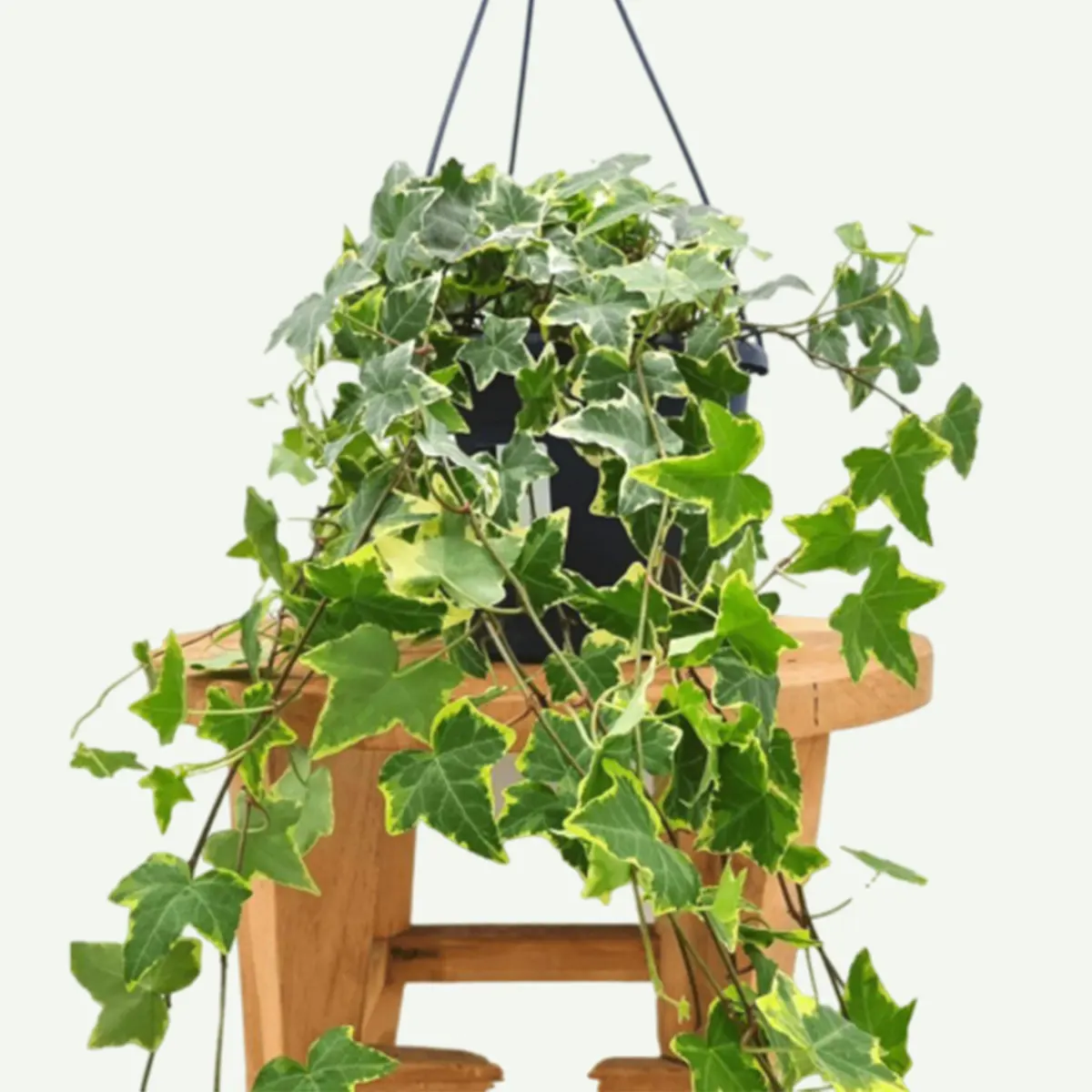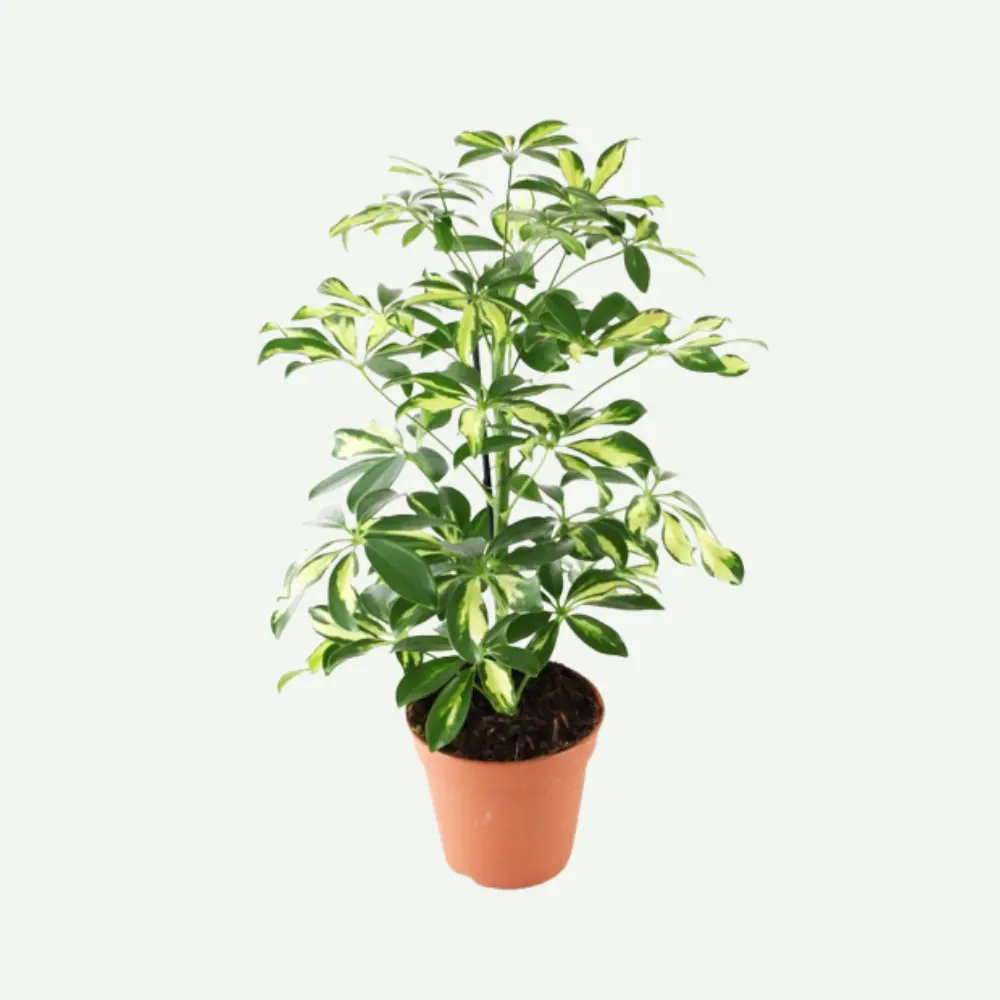Aeschynanthus radicans commonly known as the mona lisa, Lipstick Plant or Basket Vine, is a tropical flowering plant in the Gesneriaceae family. It is native to the rainforests of Southeast Asia and is appreciated for its unique tubular, red flowers and trailing growth habit, which makes it an excellent choice for hanging baskets and indoor gardening.
You can find our other indoor and outdoor plants on our website
Aeschynanthus radicans care:
Light Requirements: Provide bright, indirect light for this plant. It prefers filtered sunlight and can tolerate some morning or evening sun, but avoid exposing it to intense, direct sunlight. Temperature: This plant prefers temperatures between 65°F to 75°F (18°C to 24°C) and is sensitive to cold drafts. Protect it from temperatures below 55°F (13°C). Watering: Allow the top inch of the soil to dry between waterings. Water thoroughly and avoid overwatering, as the plant is susceptible to root rot. Humidity: This plant appreciates higher humidity levels. Regular misting or placing a humidity tray nearby can help maintain adequate moisture. Soil: Use well-draining potting soil suitable for indoor plants. Fertilizer: Feed the plant with a balanced, water-soluble fertilizer during the growing season (spring and summer) every 4-6 weeks. Reduce or stop fertilizing in the winter when growth slows down.Characterisitics of Aeschynanthus radicans:
Appearance: This Plant has long, trailing stems with glossy, dark green leaves. The leaves are thick and waxy, and they can vary in shape from lanceolate to elliptical. The plant gets its common name “Lipstick Plant” from the vibrant red, tubular flowers that emerge from the leaf axils. Indoor Plant: This Plant is primarily grown as an indoor houseplant, but it can also be grown outdoors in warm, humid climates. Pruning: Trim off any spent flowers and prune leggy growth to encourage bushier growth. Propagation: This Plant can be propagated from stem cuttings. Toxicity: This Plant is non-toxic to pets and humans.Landscape Use of Aeschynantus radicans:
- Indoor Landscaping: This Plant is an excellent choice for indoor landscapes. It can be grown in hanging baskets or containers and used to add beauty and greenery to interior spaces, including homes, offices, or conservatories.
- Vertical Gardens: The trailing habit of Aeschynanthus radicans makes it suitable for vertical gardening, such as living walls or green screens. Its attractive foliage and occasional vibrant red or orange tubular flowers can add visual interest to vertical garden designs.
- Hanging Baskets: This plant is commonly grown in hanging baskets, and its cascading growth habit creates a lush and attractive display. It can be used to decorate porches, balconies, or even covered outdoor spaces in regions with a suitable climate.
- Ornamental Borders: In some tropical and subtropical regions, Aeschynanthus radicans can be used as an ornamental border plant or ground cover in sheltered garden areas where it can receive filtered sunlight and protection from harsh elements.
- Conservatories and Greenhouses: This Plant can be an excellent addition to conservatories or greenhouses, where it can thrive in the warm, humid conditions and showcase its foliage and unique flowers.
- Interior Design: Interior designers often incorporate Aeschynanthus radicans into their projects to create living and decorative elements. It can be used in planters, terrariums, or arrangements, adding a touch of nature to various design settings.
- Botanical Gardens and Public Spaces: In regions with suitable conditions, Aeschynanthus radicans can be featured in botanical gardens, public spaces, or educational institutions as part of their indoor plant displays.
- Educational Purposes: This Plant can be used in educational settings to teach people about plant biology, propagation, and care. Its unique features, including its distinctive flowers and growth habit, make it an interesting study subject.
Note:







Reviews
There are no reviews yet.